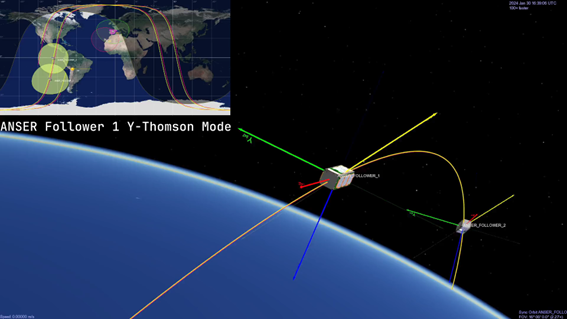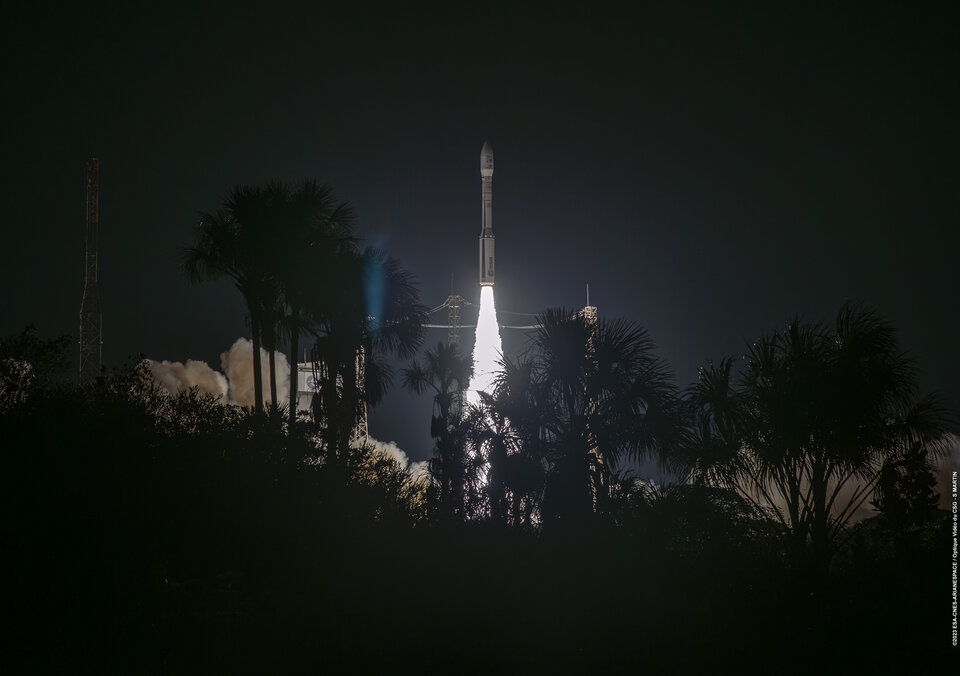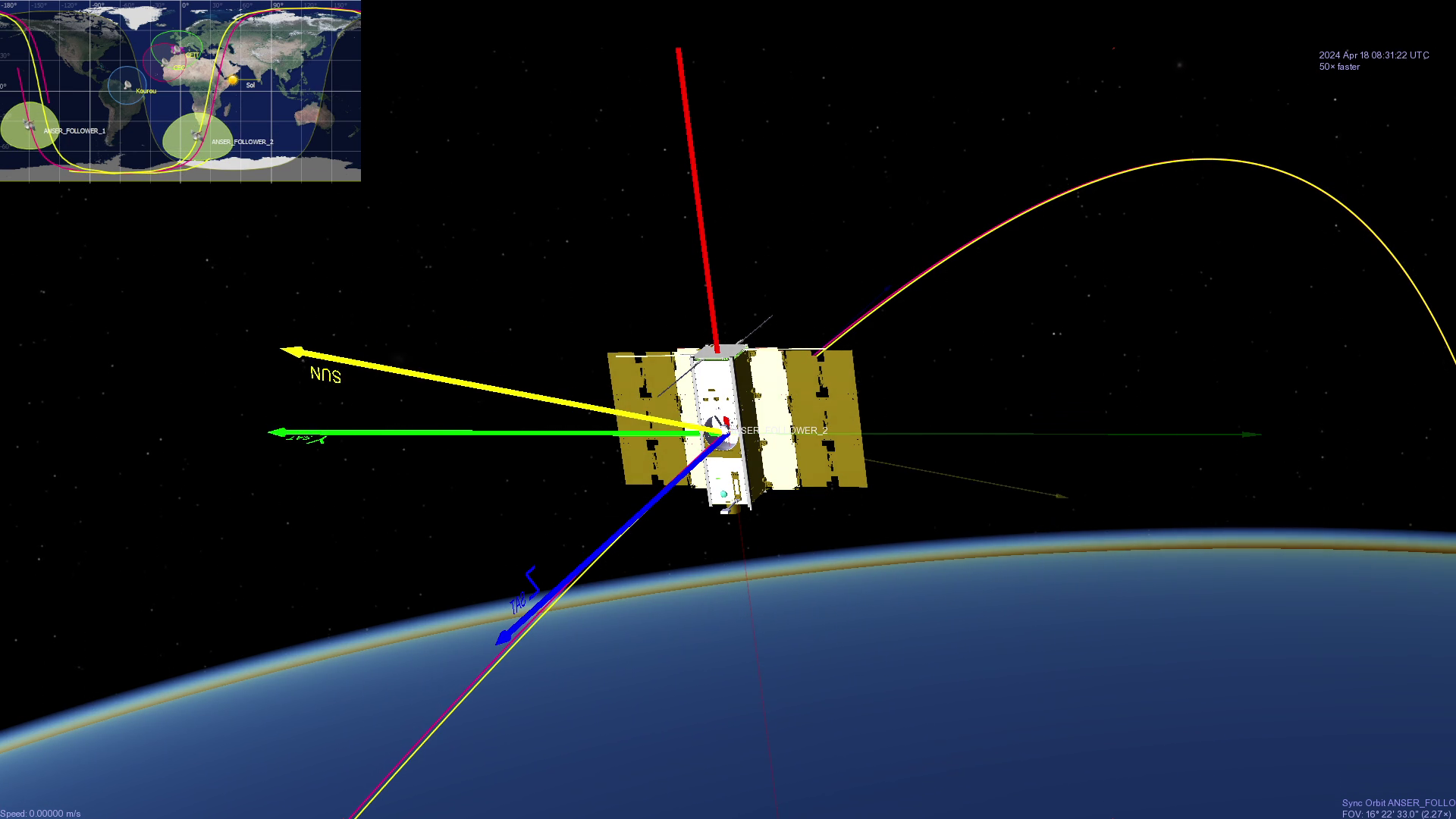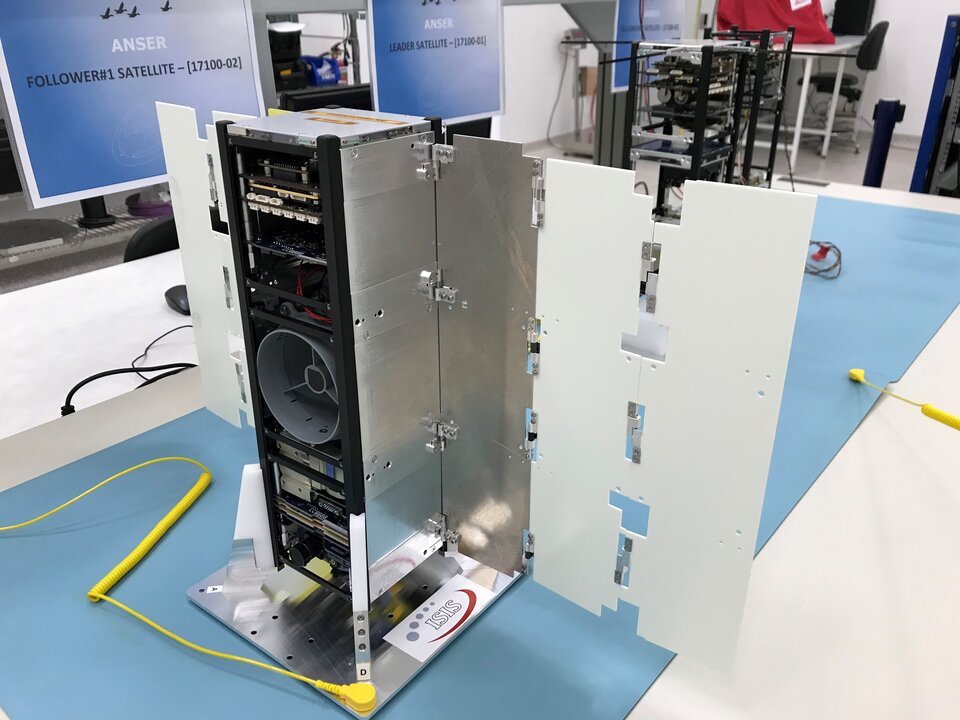Winged CubeSat flock survives loss of leader
An experimental flock of miniature CubeSats has survived the unexpected loss of its leader to begin monitoring water quality across Spain and Portugal.

Named ANSER – from the Latin for the wild goose – these shoebox-sized satellites not only fly in formation like birds but also employ wing-like deployable flaps and solar panels to perform manoeuvres on a fuel-free basis, moving against the scarce air molecules found at the very top of the atmosphere.
“The idea behind our ANSER, Advanced Nanosatellite Systems for Earth-observation Research, mission was to try to mitigate risk in a novel way,” explains Santiago Rodriguez Bustabad of INTA, the Spanish Institute of Aerospace Technology, overseeing the mission. “On a typical satellite the design incorporates redundancy – flying two or more models of the same systems to guard against something going wrong. Instead, with ANSER we decided to try a trio of satellites flying in close proximity, to work together as a cluster.

“One satellite would work as the Leader, overseeing a pair of Followers an optimum 10 km apart so they can observe the same area at the same time. This architecture increases mission resilience, because as long as at least one satellite remains operational, the mission stays alive. That at least was the theory. Then, suddenly, mere hours after launch, we had to start making it work for real.”
The ANSER trio of CubeSats – low-cost and size satellites built up from standardised 10 cm boxes – flew on Europe’s Vega Flight VV23 launch in October 2023. But while the two Follower CubeSats made it safely into orbit, the Leader CubeSat failed to deploy, reentering soon after with the rest of the Vega upper stage.
The ANSER trio had suddenly become a duo. The INTA team had to scramble to save the truncated mission.

Three become two: reworking the mission
All three CubeSats were equipped with spectrometers, linked together by radio links to function as a ‘fractionated’ instrument called CINCLUS – named after another bird species. The aim was to record the detailed colours of water bodies across the Iberian Peninsula, as well as other lakes and reservoirs worldwide for comparison, to reveal harmful contents suspended within the water, including its pollution levels or the presence of toxic microorganisms such as harmful phytoplankton blooms.
In addition, the Leader CubeSat had been fitted with a panchromatic camera, intended for cloud mapping, so any cloud cover within a scan could be accounted for during processing. The Leader satellite was also intended to relay data to the ground and instructions to the other satellites.

“As soon as our launch and early operations phase was complete, we began work to reconfigure Follower 1 to assume the Leader’s role in the cluster,” Santiago added. “This was achieved without any apparent decrease in its observation capabilities. However the Leader’s cloud detection functionality cannot be replicated by a Follower satellite. Instead we make use of Copernicus Sentinel satellite images to validate our hyperspectral data instead. This can’t be done in real time, but it still works. With this new configuration, ANSER’s mission is still 100% operational.”
Following a lengthy commissioning process, the CINCULUS payload could be validated, starting with a survey of Menorca Island that shows significant differences between land and water spectra, with an even better signal to noise ratio than predicted.


Access the video
Fuel-free orbital manoeuvring
Next began sustained testing of ANSER’s other big innovation: fuel-free orbital manoeuvring relative to each other, based on deployable flaps and solar arrays which can increase the surface area of each CubeSat more than 21-fold. Depending on their attitude, the satellite can either be dragged lower by atmospheric friction or moved sideways, out of plane – like a sailor tacking the sails of their yacht.

“Last month we deployed flaps and panels in both satellites to initiate a controlled descent to reach the nominal altitude of 500 km,” adds Santiago. “We have confirmed that those drag manoeuvres are highly efficient: despite the low atmosphere density at 570 km altitude, when a satellite is in maximum drag mode, it falls 300m per day with respect to the other satellite which is flying in minimum drag mode.
“Today, Follower 2 is 1 km lower than Follower 1; both satellites are placed in maximum drag mode to reduce the current along-track distance from 10 000 km to the nominal distance of 10 km. At the same time, they keep descending at maximum speed, so we expect to reach that nominal separation in 40 days.”

New ANSER satellite on way
ANSER was developed by INTA through internal funding, but gained its chance to fly through the European Commission’s In-Orbit Demonstration/In-Orbit Validation programme, managed on behalf of the Commission by ESA’s Small Satellite Platform Unit.
“But the ANSER story is only just starting,” Santiago remarks. “Our team has finished the integration of a new CubeSat – ANSER Leader-S – which will replace the original lost Leader, incorporating a new S-band radio to improve its communications capabilities with the ground. Its launch has been booked with ISILAUNCH in the Netherlands and SpaceX for next October, with a close enough orbit that if all goes well it can join the ANSER – demonstrating the innovative concept of uploading new hardware to an existing mission.”














 Germany
Germany
 Austria
Austria
 Belgium
Belgium
 Denmark
Denmark
 Spain
Spain
 Estonia
Estonia
 Finland
Finland
 France
France
 Greece
Greece
 Hungary
Hungary
 Ireland
Ireland
 Italy
Italy
 Luxembourg
Luxembourg
 Norway
Norway
 The Netherlands
The Netherlands
 Poland
Poland
 Portugal
Portugal
 Czechia
Czechia
 Romania
Romania
 United Kingdom
United Kingdom
 Slovenia
Slovenia
 Sweden
Sweden
 Switzerland
Switzerland

























